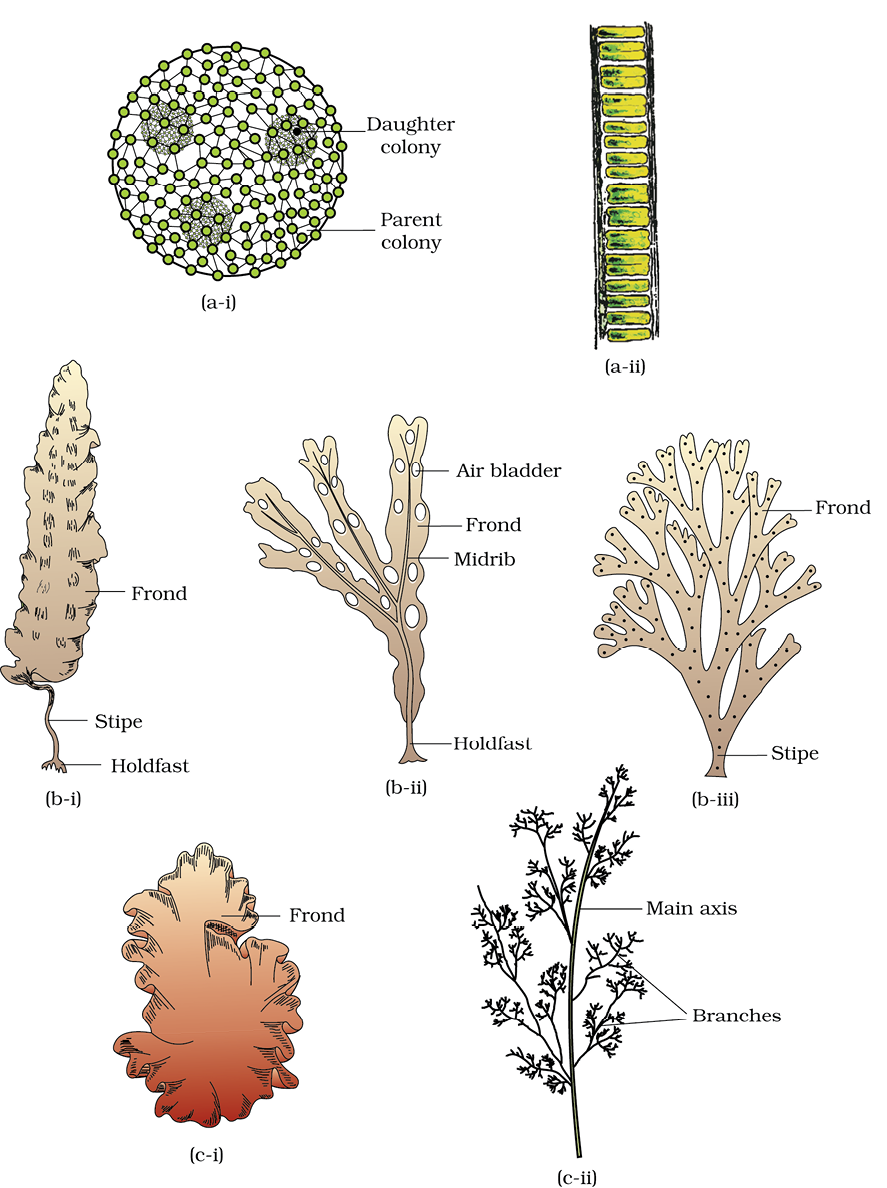Algae are chlorophyll-bearing, simple, thalloid, autotrophic and largely aquatic (both fresh water and marine) organisms. They occur in a variety of other habitats: moist stones, soils and wood. Some of them also occur in association with fungi (lichen) and animals (e.g., on sloth bear).
The form and size of algae is highly variable, ranging from colonial forms like Volvox and the filamentous forms like Ulothrix and Spirogyra (Figure 3.1). A few of the marine forms such as kelps, form massive plant bodies.
The algae reproduce by vegetative, asexual and sexual methods. Vegetative reproduction is by fragmentation. Each fragment develops into a thallus. Asexual reproduction is by the production of different types of spores, the most common being the zoospores. They are flagellated (motile) and on germination gives rise to new plants. Sexual reproduction takes place through fusion of two gametes. These gametes can be flagellated and similar in size (as in Ulothrix) or non-flagellated (non-motile) but similar in size (as in Spirogyra). Such reproduction is called isogamous. Fusion of two gametes dissimilar in size, as in species of Eudorina is termed as anisogamous. Fusion between one large, non-motile (static) female gamete and a smaller, motile male gamete is termed oogamous, e.g., Volvox, Fucus.

Algae are useful to man in a variety of ways. At least a half of the total carbon dioxide fixation on earth is carried out by algae through photosynthesis. Being photosynthetic they increase the level of dissolved oxygen in their immediate environment. They are of paramount importance as primary producers of energy-rich compounds which form the basis of the food cycles of all aquatic animals. Many species of Porphyra, Laminaria and Sargassum are among the 70 species of marine algae used as food. Certain marine brown and red algae produce large amounts of hydrocolloids (water holding substances), e.g., algin (brown algae) and carrageen (red algae) which are used commercially. Agar, one of the commercial products obtained from Gelidium and Gracilaria are used to grow microbes and in preparations of ice-creams and jellies. Chlorella a unicellular alga rich in proteins is used as food supplement even by space travellers. The algae are divided into three main classes: Chlorophyceae, Phaeophyceae and Rhodophyceae.